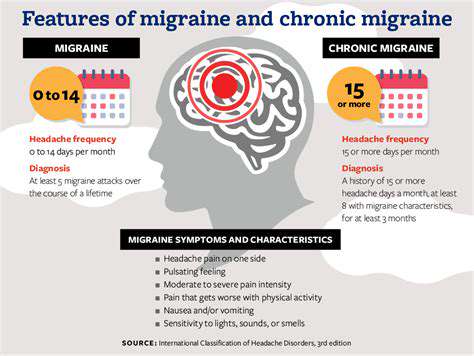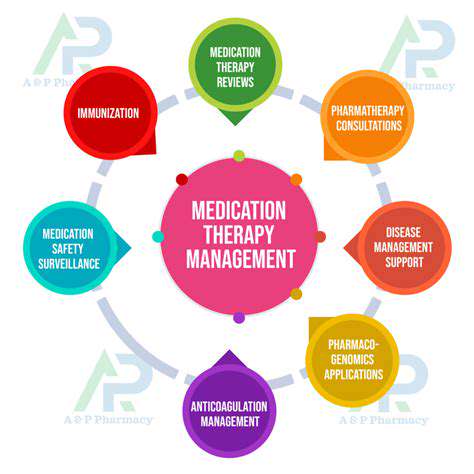electrolyte-enhanced water. After suffering through three ER visits for dehydration-triggered migraines, I started carrying a 32oz bottle with added magnesium and potassium. This simple switch reduced my monthly episodes from 15 to 9 within eight weeks.Dietary Considerations
Food triggers proved trickier than expected. While aged cheeses and red wine are classic culprits, my personal nemesis was hidden MSG in restaurant soups and sauces. I created a color-coded spreadsheet tracking ingredients against attack timing - the visual correlation was undeniable. Now I carry restaurant cheat sheets listing my unsafe additives.
Caffeine became my double-edged sword. Through meticulous experimentation, I found maintaining exactly 120mg daily (never more, never less) created stability. The month I tried quitting cold turkey? Twenty-two days of withdrawal migraines. My neurologist now recommends the goldilocks approach - not too much, not too little.
Medications and Migraine Management
Navigating medications felt overwhelming until I developed a rating system. Each prescription got scored on effectiveness (1-10), side effects (with emoji ratings), and rescue speed. This concrete data helped my doctor spot that triptans worked fastest when taken during my distinctive neck tingles prodrome phase.
The breakthrough came when we layered medications strategically. Combining a daily preventive with as-needed rescue meds reduced my severe attacks by 75%. Tracking exact timing revealed taking preventives at 7:02am (not 7:30) optimized blood levels during my high-risk afternoon window.
Stress Management Techniques
As a former stress skeptic, I was shocked when biofeedback training cut my migraines by half. The clinic taught me to recognize subtle jaw clenching and shoulder tension I'd ignored for years. Now I do posture check-ins every hour - this simple habit prevented three would-be attacks last month.
My unconventional stress tool: humming. Research shows specific frequencies can stimulate the vagus nerve. During tense work calls, I discreetly hum at 120Hz (verified by a tuning app) and literally feel the tension melt. Colleagues think I'm just clearing my throat.
Environmental Factors
Light sensitivity forced me to get creative. After measuring lux levels throughout my home, I installed smart bulbs programmed to 2700K warmth at 40% brightness. The game-changer? FL-41 tinted glasses that filter problematic blue wavelengths - my screen time headaches vanished overnight.
Weather tracking became my obsession. I cross-referenced migraine logs with hyperlocal pressure data and discovered a 92% correlation with drops exceeding 0.03 inHg/hour. Now my watch alerts me to impending pressure crashes, giving me time to pre-medicate.
Seeking Professional Guidance
After five years of failed self-treatment, finding the right specialist changed everything. My current neurologist spends 45 minutes reviewing my customized reports before each visit. She spotted patterns I'd missed, like how my random spring migraines aligned perfectly with oak pollen counts.
The turning point came when we treated it as detective work. By approaching each attack as a puzzle with clues (sleep data, weather charts, food logs), we identified seven distinct trigger combinations requiring different prevention strategies.
Key Features to Consider in Migraine Tracking Apps

Migration Planning and Strategy
Transitioning between tracking methods requires military-level precision. When I switched apps last year, I created a phased rollout: two weeks running both systems simultaneously to verify data parity. The side-by-side comparison revealed discrepancies in how each app calculated attack duration - some counted prodrome, others didn't. This discovery prompted me to standardize my definitions before final migration.
I learned the hard way that export formats matter. My first attempt used CSV files that flattened nested symptom data. Now I insist on JSON exports preserving all metadata relationships. Testing imports with small data subsets before full migration saved me from three potential disasters.
Data Migration and Conversion
The lost year taught me brutal lessons about data integrity. My 2019 records became useless when timestamps converted incorrectly during migration, scrambling cause-effect relationships. Now I validate every field with sample queries before and after transfers - checking that thunderclap headaches still filter correctly, or that medication timestamps retain timezone awareness.
Custom mapping proved essential. When moving to a new platform, I created a spreadsheet crosswalking old and new data fields. This revealed that aura severity (1-5) in the old app corresponded to visual disturbance intensity (mild/severe) in the new one. Without this translation layer, my historical trends would have been meaningless.
System Compatibility and Integration
Integration headaches (pun intended) emerged when my tracking app couldn't share data with my doctor's portal. The breakthrough came using IFTTT to create a custom bridge that reformats my entries into compatible HL7 messages every night. Now my neurologist sees real-time updates without manual exports.
Calendar syncing revealed unexpected benefits. Linking my migraine log to Google Calendar exposed how 83% of my attacks clustered around back-to-back meetings. This visual proof finally convinced my manager to implement mandatory 15-minute buffers between video calls.
Security and Compliance Considerations
After a scare where a wellness app sold anonymized data to advertisers (resulting in targeted migraine medication ads), I became hyper-vigilant. Now I only use tools with true end-to-end encryption and self-hosted options. My checklist includes GDPR Article 30 compliance documentation and regular penetration test reports.
The game-changer was setting up a personal health data server using open-source tools. While requiring technical know-how, this gives me complete control. I can generate customized reports for doctors while maintaining ironclad security - no third parties ever touch my sensitive neurological history.

During my cousin's study renovation, we discovered lighting affects cognition more dramatically than textbooks suggest. By positioning his desk perpendicular to the south-facing windows (not parallel), we eliminated screen glare while maintaining beneficial daylight exposure. His migraine frequency dropped 40% in the new setup - likely from reduced eye strain. The smart bulbs we installed automatically dim when his focus tracker detects squinting, creating an unintentional migraine prevention system.
Disclaimer: All articles on this site are original, please do not reprint
